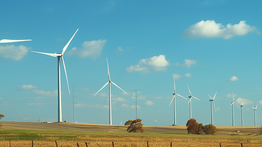

American drivers are likely to face higher gas prices this summer, possibly exceeding $4 per gallon, a trend that may intensify inflationary pressures.
As spring emerges, American drivers should brace for higher gas prices, with forecasts suggesting the average cost could reach $4 a gallon during the summer, potentially reigniting inflationary pressures. The American Automobile Association (AAA) has reported a 15 percent year-to-date increase in the national average for a gallon of gasoline, currently at $3.53.
Rob Thummel, a senior portfolio manager at Tortoise, cautions consumers to "watch out for summer gasoline prices, which some predict may extend above $4 per gallon nationwide and put pressure on inflation." Despite a recent lull in price changes, industry experts, including Andrew Gross from AAA, signal that prices are expected to resume their upward trend. Gross compares the seasonal dynamic of gas prices to temperatures, indicating a "slow and steady" climb akin to last year's pattern.
Patrick De Haan, GasBuddy's head of petroleum analysis, notes that while some regions have enjoyed a respite from weekly hikes, the transition to summer-grade gasoline, up to 15 cents more per gallon due to a more involved manufacturing process, could lead to "sticker shock" in the coming weeks, particularly in the Mid-Atlantic and Northeast.
The surge in gas prices is linked to a rally in global oil markets, with West Texas Intermediate crude surpassing $85 per barrel and Brent crude nearing $90 a barrel, levels not seen for several months. Given that crude oil constitutes over half the price of gasoline, any fluctuations in the oil market have a direct impact at the pump.
Oil prices have been influenced by a variety of factors, including tight global energy markets, geopolitical tensions, and speculation about Federal Reserve policy. Economically, the U.S. has displayed resilience with better-than-expected growth figures and a positive manufacturing outlook, yet persistent inflation remains a concern. Rising energy costs could trigger a second wave of inflation, potentially influencing the Federal Reserve's timetable for interest rate cuts.
Globally, the supply of oil is under pressure. OPEC+ has extended its output reductions, and Russian oil firms are focusing on cutting output. In the U.S., crude production has plateaued, while gasoline demand has dipped, according to the Energy Information Administration.
Phil Flynn of The PRICE Futures Group warns of a potential global supply deficit, with inventories for products like gasoline and diesel below average. According to Thummel, global crude inventories are at their lowest in 16 months, while demand is expected to hit record highs this year.
Geopolitical conflicts also play a role in the oil price surge, with tensions in the Middle East and other areas closely watched by investors for their potential to disrupt supply chains. JPMorgan Chase strategists have speculated that Brent crude prices could reach $100 a barrel by September, which, if accurate, could validate predictions of $4 gas this summer.
Originally reported by The Epoch Times